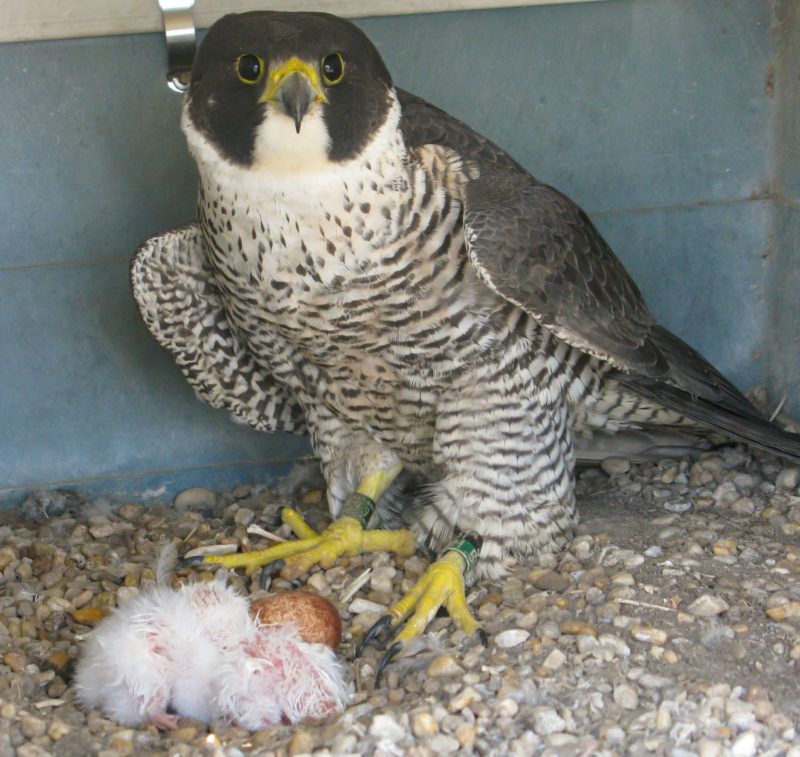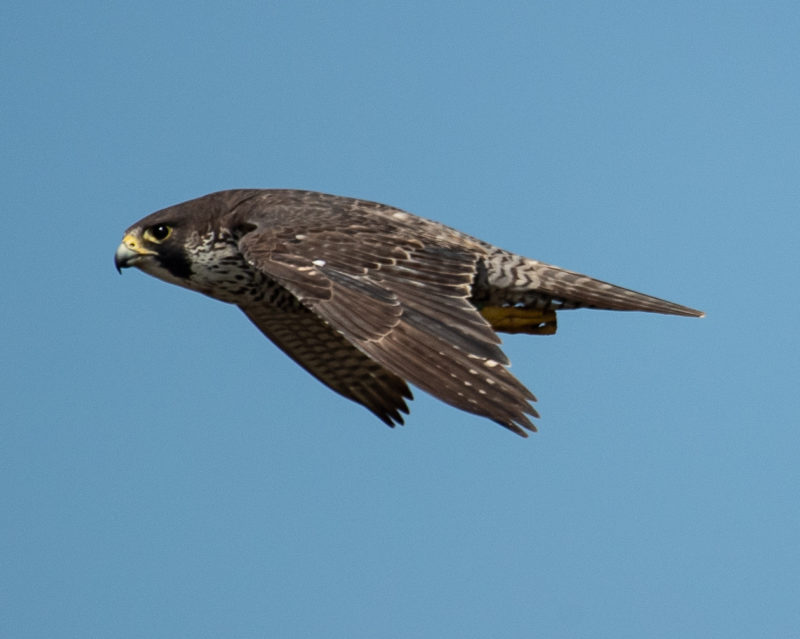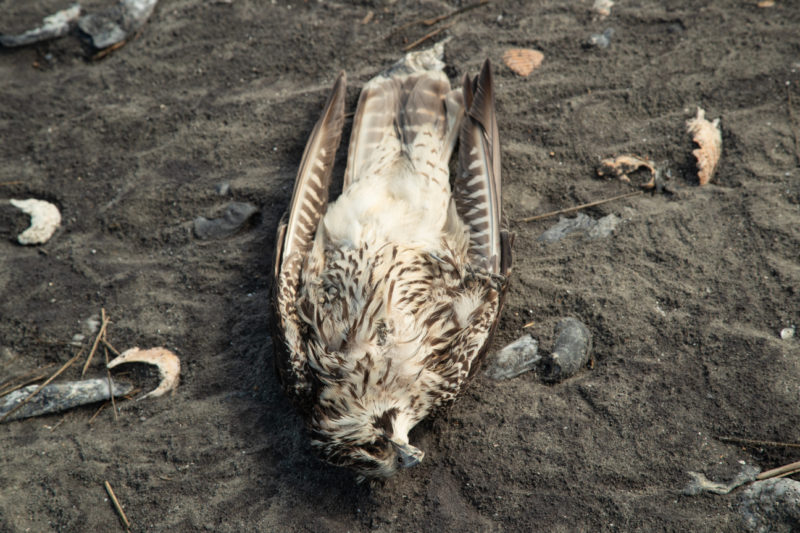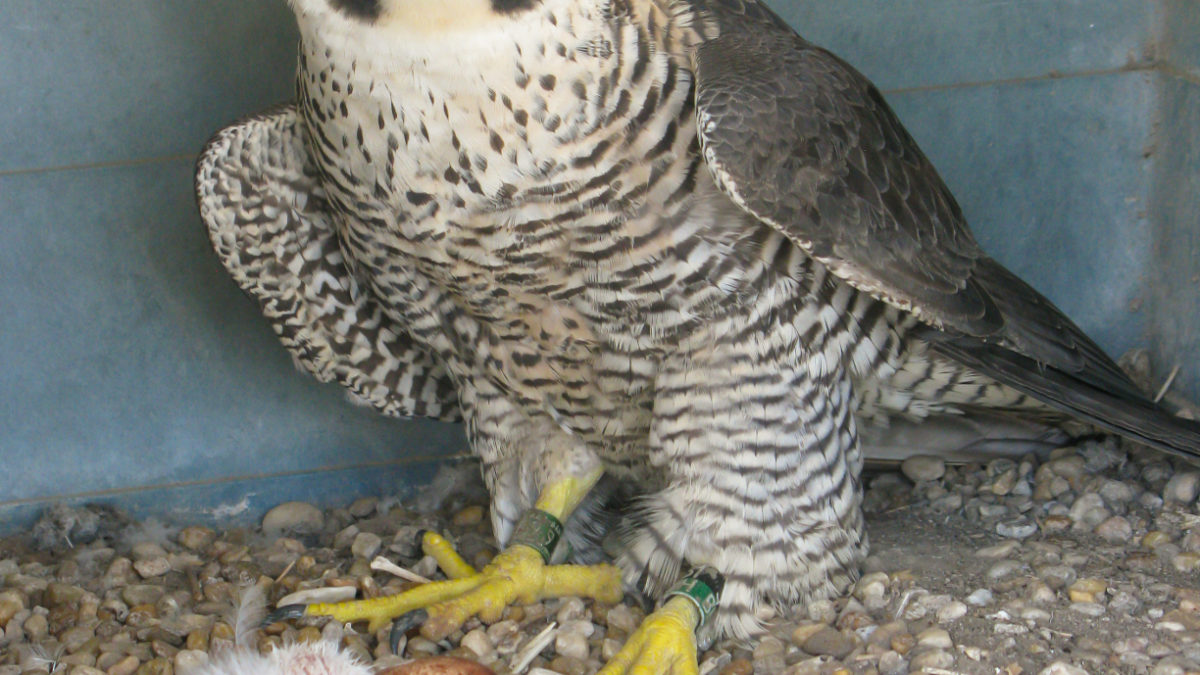Adult turnover spikes in Virginia peregrines raising alarms about the potential impact of avian flu

Where Wayne’s Warblers Dwell
April 2, 2024
The 2024 Osprey Field Season
July 18, 2024
By Bryan Watts
7/18/23
Between 2023 and 2024, Virginia peregrine falcons experienced a spike in adult turnover. The mean replacement rate (percentage of identified individuals lost) or turnover for breeding adults (2016-2023) in the Virginia population has been 16.6 ± 1.87% (SE) in recent years. During this past year the rate more than doubled to 40%.
One of the more intriguing and concerning observations in 2024 was that the turnover rate was not consistent across the state. For pairs nesting along the western shore tributaries of the Chesapeake Bay and into the Piedmont the turnover rate was 12.5%. This rate is consistent with the long-term trend. On the Delmarva Peninsula the turnover rate was an alarming 63.2%. Associated with this observation is that three breeding territories that have been consistently occupied for more than a decade were not occupied during the 2024 season.
Three of the birds recruited into the breeding population were second-year females. Females typically recruit into the breeding population during their 3rd or 4th year. Although we have documented young females taking over territories, it is not common. The fact that three young females recruited into the population may suggest that the pool of recruits is getting thin. Second-year females typically do not lay clutches and none of the three second-years laid clutches during the 2024 season.

Consistent with Patterns Elsewhere in the Range
The observations from Virginia this year are consistent with reports throughout the peregrine breeding range. Territory occupancy declined along the Yukon River in Alaska 14% in 2021, 28% in 2022 and 34% in 2023 according to Skip Ambrose. A 48% decline in occupancy for Montana was reported by Jay Sumner, a 30% decline in New Mexico (Terry Johnson) and 43% decline in Nevada (Joe Barnes). Declines have also been reported in Scotland, Hungary and Russia. Both the speed and magnitude of these declines are concerning and represent the most significant threat to peregrines since the DDT era.
Many of the birds that have died throughout the broader range have tested positive for avian flu and a number of birds have exhibited neurological symptoms consistent with the flu. Some birds in Virginia have also tested positive for avian flu.
Because peregrines are bird specialist and often depend on migrant shorebirds or waterfowl, they may have high exposure to an outbreak of avian flu. In past studies, CCB has documented that pairs breeding along the Delmarva Peninsula have a high dependency (>70%) on migratory shorebirds. Other pairs in Virginia have a much lower dependency on shorebirds. It is possible that shorebirds may be an important vector for avian flu and that the two subpopulations may differ in their exposure.

Avian Flu
The vast majority of avian flu variants and outbreaks are referred to as low-pathogenicity avian influenza (LPAI) and result in very low rates of observable disease and low rates of mortality. However, a small number of variants are classified as high-pathogenicity avian influenza (HPAI). Such variants may cause catastrophic impacts to domestic birds and may spill over into populations of wild birds. The current strain of HPAI emerged in poultry in Guangdong, China in 1996 and has undergone significant mutations over the past 20 years circulating within Eurasia and Africa. The movement of H5N1 2.3.4.4 across the Atlantic by migratory birds in late 2021 was a turning point that led to rapid expansion and an unprecedented impact on wild birds. Over the past three years, the disease has spread globally and has been documented in more than 500 wild bird species. All indications are that this form or close variants will be circulating for years to come.

Virginia Peregrine Falcon Population
The peregrine falcon was believed to be extirpated as a breeding species in Virginia by the early 1960s. An aggressive restoration program was initiated in 1978 that included the release of 115 captive-reared birds on the Coastal Plain (1978-1985) and 127 birds in the mountains (1985-1993). This program resulted in the first breeding of the modern era in 1982. Since this time, the population has continued a slow but steady recovery reaching 35 known breeding pairs by 2023. Recovery of the population to this milestone has been a long commitment and a lot of resources by a community of concerned biologists and agencies. Avian flu poses a unique threat to recovery efforts. Our hope is that the population will withstand the period of exposure.




